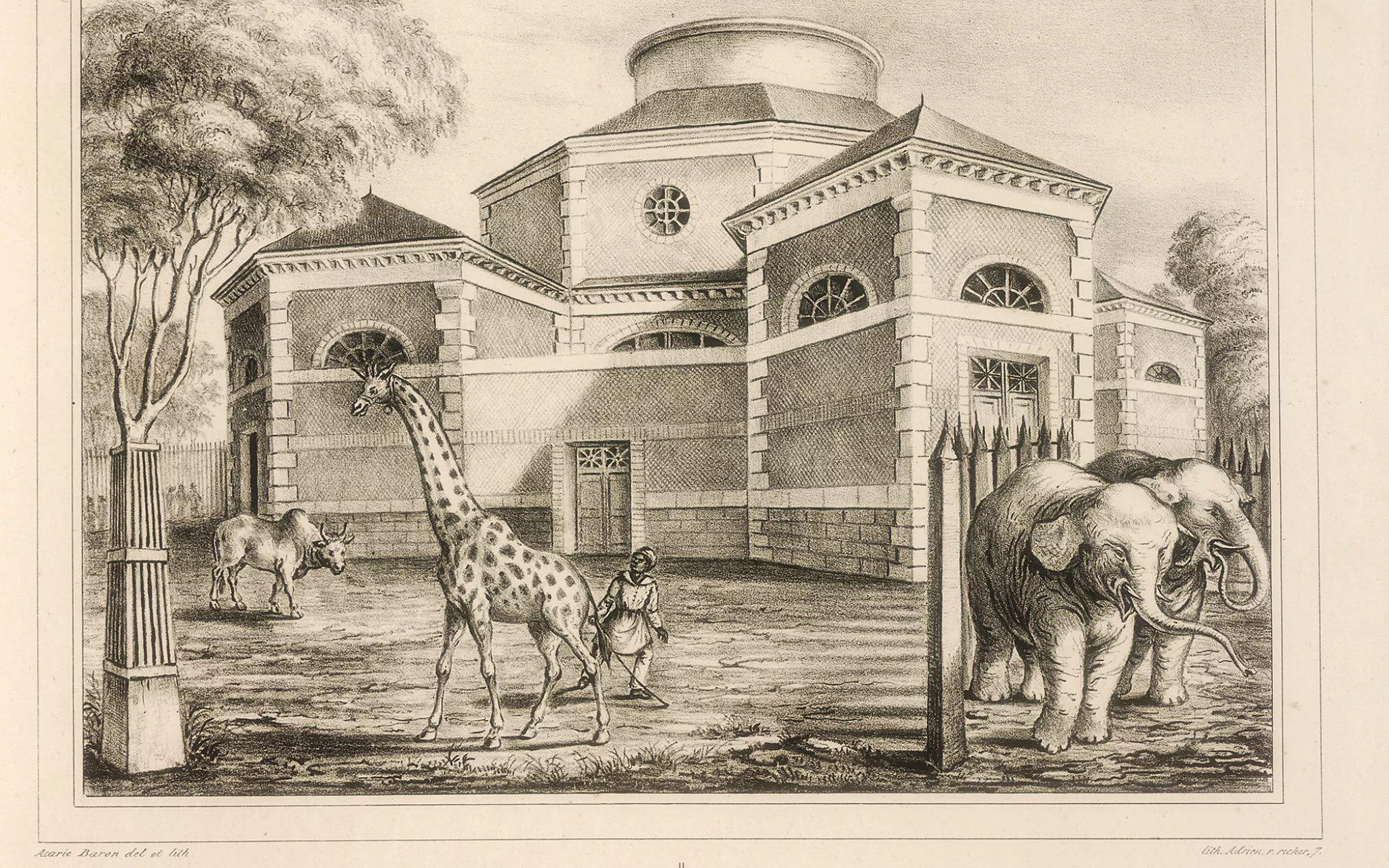History of the Ménagerie, the zoo of the Jardin des Plantes
The Ménagerie is one of the oldest zoos in the world, second only to Tiergarten Schönbrunn (Vienna, Austria, 1752). Opened in 1794, it has hosted a huge variety of living species. Some denizens have been, and remain, very popular, including Zarafa the giraffe in the nineteenth century. Nowadays Nénette, the orangutan, is our biggest star. The long history of the Ménagerie can be told through its buildings. All classified as Monuments Historiques, they constitute a unique architectural heritage which is part of the charm of your visit.
Two hundred and twenty years of history
The Ménagerie is over 220 years old. Created under the National Convention government in 1794, new buildings were added as new animals were brought to the collection.
1792
The intendant of the Jardin National des Plantes, Bernardin de Saint Pierre, first mooted the idea of a ménagerie to enrich the Museum's collections of living animals.
1793
A municipal decree put an end to the exhibition of wild animals in the streets of the capital. The new denizens were given lodgings in temporary facilities in the Jardin des Plantes. Their owners were hired as their first keepers ("soigneurs" in French, which means "carers").
1794
The few surviving animals of the royal menagerie of Versailles were transferred to Paris, as were those of the menagerie of the Duke of Orléans. A decree of the National Convention government officially inaugurated the Ménagerie, which at that time was home to 58 animals.
From 1798 onwards
Some large animals arrived - elephants, lions, camels, ostriches, bears, buffaloes (animals requisitioned by the armies of the National Convention, then by Napoleon, gifts from monarchs and animals brought back from expeditions, among others).
1805
The first constructions — the "fabriques" and the bear pits
1812
Inauguration of the rotunda, built in the shape of the Légion d'Honneur cross, which had been established in 1802 by Napoleon Bonaparte.
1827
Zarafa joined the Ménagerie Parisians came in huge numbers to see the giraffe in her Rotunda, where she lived for 18 years.
1870
The darkest hours: during the siege of Paris by Prussian forces, many animals were killed by the bombardments, and others were slaughtered to feed the population.
1934
Inauguration of the Parc Zoologique de Paris (Zoological Park of Paris), which eclipsed the Ménagerie for a time.
1937
End of construction of the Big Cat House, with its revolutionary art deco buildings.
2003
The bear pits were transformed to welcome red pandas and binturongs.
2008
Closure of the Parc Zoologique de Paris for renovation. The Ménagerie served as a temporary home for some of its residents.
2012
Renovation of the Big Cat House
2013
Construction of the Desert Aviary
2015 to 2020
Renovation of the Reptile House (1874) and the Monkey house (1936).
A unique architectural heritage
The long history of the Ménagerie is enshrined in its buildings, all of which have been protected by conservation orders since 1993. Many amazing architectural features can be discovered at the same time as their denizens.
To the "fabriques", small log cabins made of cob and thatch, built to accommodate the very first animals, were added buildings in stone and metal, with an astonishing diversity of styles: Bear pits (1805), the Rotunda (1802–1812), in the shape of the Légion d'Honneur cross, the Reptile House (1870) and the Aviary (1888).
The Art Deco style is characteristic of constructions of the inter-war period: the Vivarium (1926), the Monkey house (1936) and the Big Cat House (built in 1937 by René Berger, who also designed the Grande Serre (Greenhouses) and the Grande Galerie de l’Evolution (Gallery of Evolution)). In 2013, the Desert Aviary was added to enrich this precious architectural heritage.
